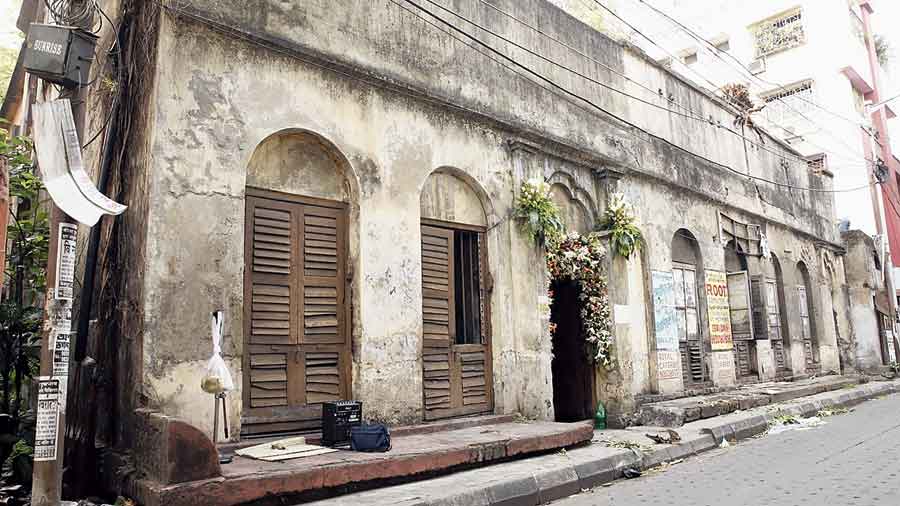At 11.36am on Monday, minister Sashi Panja turned the key, along with senior disciple Jananivas Das, after doing an arati before the closed door, the lock on the door to Bhaktivinode Asan clicked open and devotees gathered behind them raised their hands, chanting Hare Krishna in chorus.
Thus 100 years after the first meeting of Iskcon founder Bhaktivedanta Swami Prabhupada with his guru Bhaktisiddhanta Saraswati took place in 1922, the building that hosted the meeting was reinstated as a seat of Vaishnava spiritual practice.
The single-storeyed stucture, spread over eight cottahs, is at 60/14, Gauribari Lane, off Raja Dinendra Street, about 15 minutes by car from the Ultadanga crossing. The Sitalnath Jain temple is a stone’s throw away.
The building was taken on a monthly rent of Rs 50 in 1918 to set up Gaudiya Math after the founder, Bhaktisiddhanta Saraswati, was advised to open a preaching centre in Calcutta, said Sourish Das, a research assistant at Bhakti Vedanta Research Centre which was commissioned to set up a museum here.
A room on the ground floor houses the museum that chronicles important events that took place when the Gaudiya Math was situated here, till 1930, when it shifted to its current Baghbazar premises.
The address was then 1, Ultadingi Junction Road which has been retained in the signage on the outer wall.
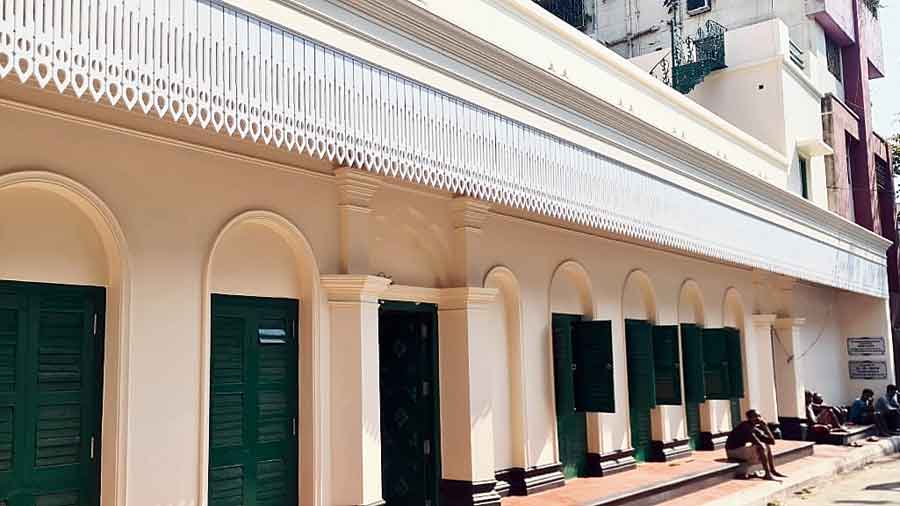
Post renovation: The building at 60/14, Gauribari Lane, off Raja Dinendra Street. It is now locally referred to as Iskcon Ultadanga
Glimpses of past
The museum has photographs of nam sankirtan happening on the road in front of the building, of Saraswati with eminent visitors and local residents, as well as letters written by him with the letterhead showing the building’s address.
Among people who came to meet Saraswati during his stay at the building was Pandit Madan Mohan Malaviya, who visited on April 17, 1925 along with Pijuskanti Ghosh, the son of Amrita Bazar Patrika founder-editor Sisir Kumar Ghosh, and Pandit Panchanan Tarkaratna’s educationist son Srijiva Nyayatirtha. The news was reported in the April 24 edition of the Forward newspaper.
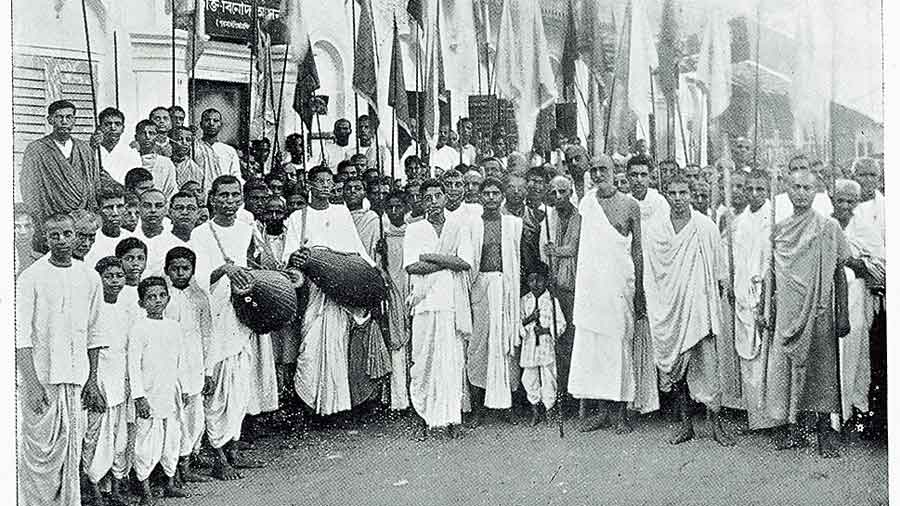
Bhaktisiddhanta Saraswati with a sankirtan party outside the building, then known as Bhaktivinoda Asan
On October 5, 1930, the deities were removed in a chariot from the old address to be installed at the new math in Baghbazar. Netaji Subhas Chandra Bose, then the mayor of Calcutta, participated in the festival and met Saraswati. The newspaper Liberty reported this on October 12.
Since then, the building was held in trust but due to lack of maintenance, was falling into a state of disrepair. Jananivas Das, a direct disciple of Prabhupada who is the head priest at Iskcon’s Mayapur temple, recalls being taken to see the building by local devotees long before Iskcon took it over in 2008. “I am so happy today,” said the 77-year-old born in the UK, as he stepped onto the terrace where Prabhupada is said to have been initiated into the spiritual path by Saraswati.
There under a pergola, statues have been installed of Saraswati and his disciples in a preaching session. At a side, stands an attic which was Saraswati’s living quarters.
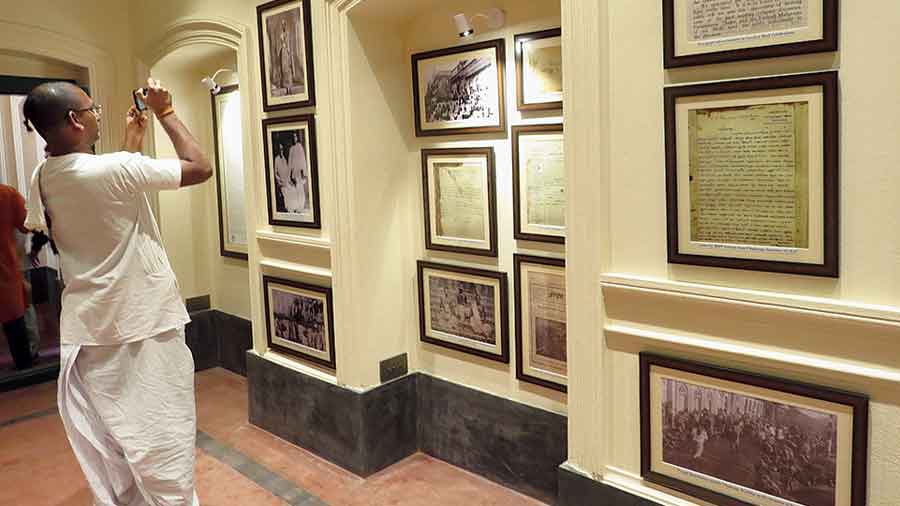
A disciple takes a picture of the museum exhibits. Sudeshna Banerjee
Downstairs, there is a temple with pictures of Radha Krishna in one of the rooms. “We will install idols soon,” said Radharaman Das, vice-president, Iskcon, Calcutta. Next to it are rooms which will lodge outstation disciples. Outside, in an open-air corridor is a tulsi mancha next to which the 80ft wide boundary wall has been done up with terracotta panels depicting the life of Sri Chaitanya in relief, in the Bishnupur style.

The pergola on the roof with fibre models of Bhaktisiddhanta Saraswati and his disciples meeting the young Prabhupada, then known as Abhay Charan De, and his friend Narendra Mullick. Sudeshna Banerjee
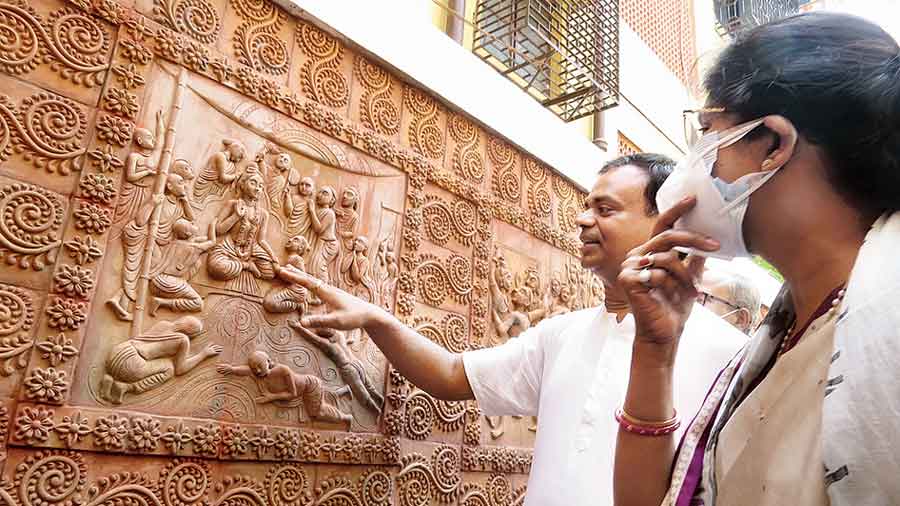
Radharaman Das of Iskcon shows etchings of Sri Chaitanya’s life in terracotta relief work to minister Sashi Panja on Monday. Sudeshna Banerjee
The restoration story
In 2001, a devotee brought the building to the notice of the Iskcon authorities. Once research established its significance, there was news that a contractor who had purchased the building was set to demolish it. “It took us six-seven years of litigation to successfully negotiate with him and another 10 years to vacate the structure of three existing tenants. Restoration could finally be started in 2019,” said Radharaman Das, who showed the minister around.
The principles of heritage conservation were followed in the repair and renovation of the chun-surki (lime and brickdust) structure. “We found a mason from Murshidabad adept in handling heritage buildings. He took us to the Burrabazar masala patti and bought a variety of spices, chite gur, rotten woodapple (bel), pumpkin... All this was fermented and the juice extracted was used for binding of the construction material. Even for the damaged portions which had to be taken down, the brick dust was preserved and reused with fresh lime and the organic binding material,” he pointed out. One hundred litres of mustard oil were used for water-proofing of the roof.
Even as the sun beat down upon the roof, the ground floor remained cool. The answer lay in the care taken to retain the architectural characteristics of the original structure. Every room has 16 shutters of doors and windows combined to allow maximum ventilation, he pointed out.
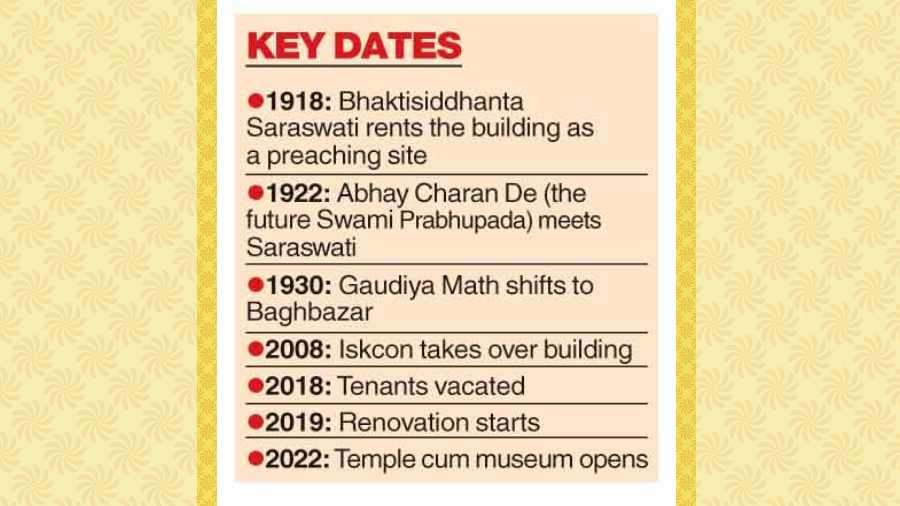
The roof itself is over 16 inches thick. To replace the damaged wooden beams, tall trees were shipped in from South America. “We used teak for the doors and windows but needed sal for the beams for which a timbre merchant was contracted to arrange for the import,” said Radharaman.
Above the wooden logs, there are two layers of brick tiles over which 16 inches of chun-surki were laid. “This is why you get this naturally air-conditioned feel even in the heat,” he smiled.
The cost for the renovation, including the rehabilitation of the tenants, came to about Rs 4 crore.
Minister Sashi Panja was effusive in her praise for the effort. “This place was witness to the meeting of two great gurus that resulted in the proliferation of the messages of The Gita. The math is a pride of Calcutta as well as the whole of India,” said the minister.
Write to saltlake@abp.in
